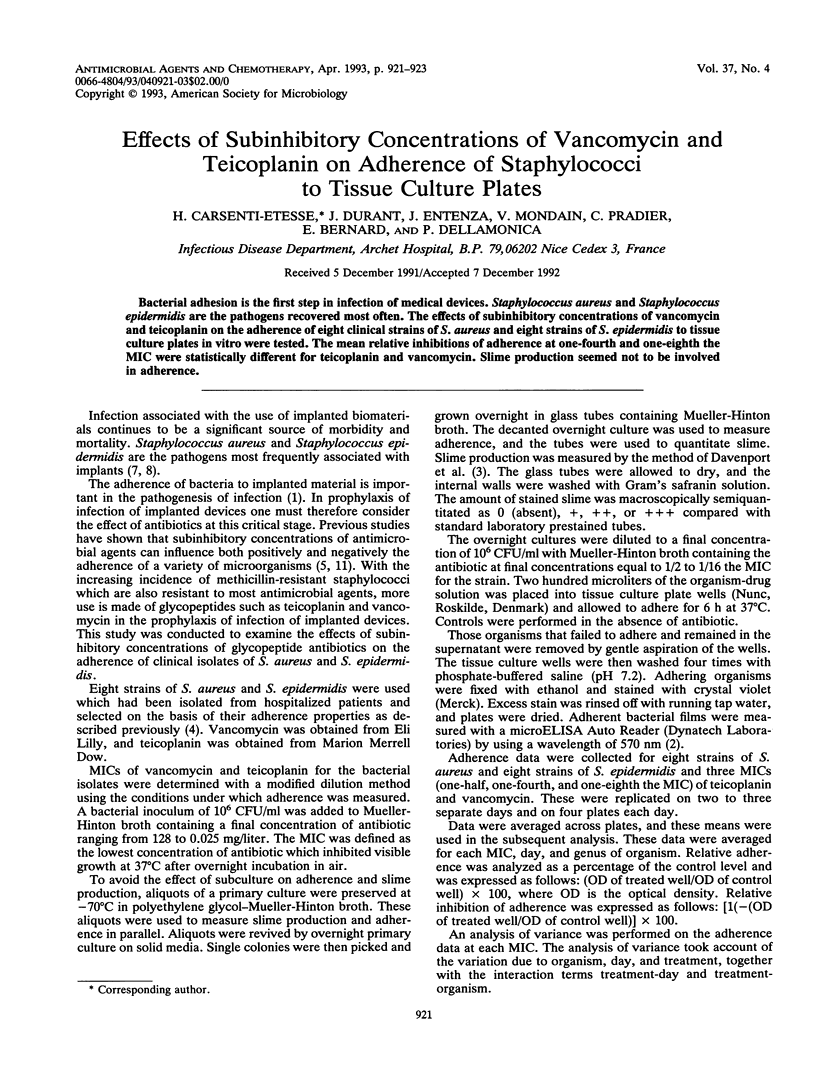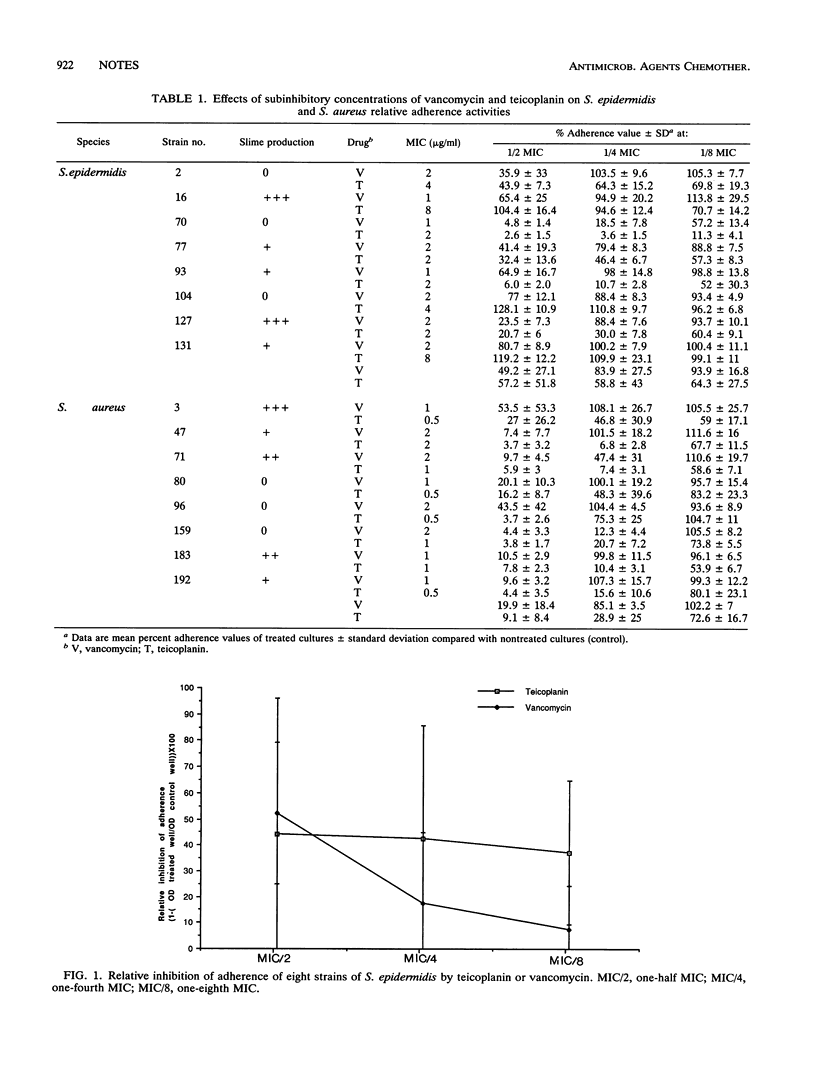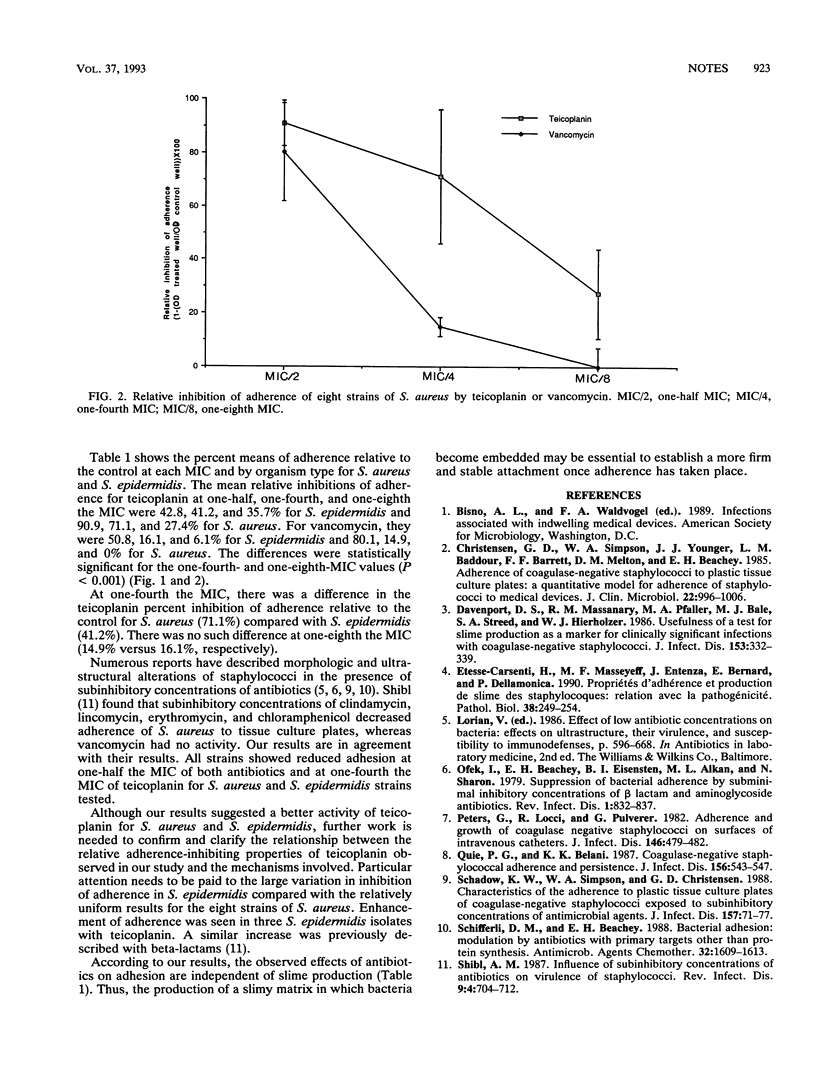Abstract
Bacterial adhesion is the first step in infection of medical devices. Staphylococcus aureus and Staphylococcus epidermidis are the pathogens recovered most often. The effects of subinhibitory concentrations of vancomycin and teicoplanin on the adherence of eight clinical strains of S. aureus and eight strains of S. epidermidis to tissue culture plates in vitro were tested. The mean relative inhibitions of adherence at one-fourth and one-eighth the MIC were statistically different for teicoplanin and vancomycin. Slime production seemed not to be involved in adherence.
Full text
PDF


Selected References
These references are in PubMed. This may not be the complete list of references from this article.
- Christensen G. D., Simpson W. A., Younger J. J., Baddour L. M., Barrett F. F., Melton D. M., Beachey E. H. Adherence of coagulase-negative staphylococci to plastic tissue culture plates: a quantitative model for the adherence of staphylococci to medical devices. J Clin Microbiol. 1985 Dec;22(6):996–1006. doi: 10.1128/jcm.22.6.996-1006.1985. [DOI] [PMC free article] [PubMed] [Google Scholar]
- Davenport D. S., Massanari R. M., Pfaller M. A., Bale M. J., Streed S. A., Hierholzer W. J., Jr Usefulness of a test for slime production as a marker for clinically significant infections with coagulase-negative staphylococci. J Infect Dis. 1986 Feb;153(2):332–339. doi: 10.1093/infdis/153.2.332. [DOI] [PubMed] [Google Scholar]
- Etesse-Carsenti H., Masseyeff M. F., Entenza J., Bernard E., Dellamonica P. Propriétés d'adhérence et production de slime des staphylocoques: relation avec la pathogénicité. Pathol Biol (Paris) 1990 Apr;38(4):249–254. [PubMed] [Google Scholar]
- Ofek I., Beachey E. H., Eisenstein B. I., Alkan M. L., Sharon N. Suppression of bacterial adherence by subminimal inhibitory concentrations of beta-lactam and aminoglycoside antibiotics. Rev Infect Dis. 1979 Sep-Oct;1(5):832–837. doi: 10.1093/clinids/1.5.832. [DOI] [PubMed] [Google Scholar]
- Peters G., Locci R., Pulverer G. Adherence and growth of coagulase-negative staphylococci on surfaces of intravenous catheters. J Infect Dis. 1982 Oct;146(4):479–482. doi: 10.1093/infdis/146.4.479. [DOI] [PubMed] [Google Scholar]
- Quie P. G., Belani K. K. Coagulase-negative staphylococcal adherence and persistence. J Infect Dis. 1987 Oct;156(4):543–547. doi: 10.1093/infdis/156.4.543. [DOI] [PubMed] [Google Scholar]
- Schadow K. H., Simpson W. A., Christensen G. D. Characteristics of adherence to plastic tissue culture plates of coagulase-negative staphylococci exposed to subinhibitory concentrations of antimicrobial agents. J Infect Dis. 1988 Jan;157(1):71–77. doi: 10.1093/infdis/157.1.71. [DOI] [PubMed] [Google Scholar]
- Schifferli D. M., Beachey E. H. Bacterial adhesion: modulation by antibiotics with primary targets other than protein synthesis. Antimicrob Agents Chemother. 1988 Nov;32(11):1609–1613. doi: 10.1128/aac.32.11.1609. [DOI] [PMC free article] [PubMed] [Google Scholar]
- Shibl A. M. Influence of subinhibitory concentrations of antibiotics on virulence of staphylococci. Rev Infect Dis. 1987 Jul-Aug;9(4):704–712. doi: 10.1093/clinids/9.4.704. [DOI] [PubMed] [Google Scholar]


